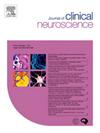IF 1.9
4区 医学
Q3 CLINICAL NEUROLOGY
引用次数: 0
摘要
认知障碍是一项重大的公共卫生挑战,尤其是在患有高血压的老龄人口中。左和杨的研究利用一个具有很强判别能力的模型(AUC ROC:训练集为 0.802,测试集为 0.756),对高血压患者认知功能下降的预测风险因素提供了有价值的见解。这封信强调了研究中发现的七个关键风险因素:性别、年龄、教育水平、贫困收入比(PIR)、抑郁、剧烈运动和肌酐水平。男性患认知障碍的风险高于女性,这可能是由于雌激素具有神经保护作用。年龄的增长和教育水平的降低也是认知能力下降的重要预测因素。此外,社会经济差异和抑郁症也对认知健康产生了重大影响,这突出表明有必要采取综合的心理健康和政策干预措施。保护性因素,如剧烈的体育锻炼和较低的肌酐水平,强调了基于生活方式的策略的重要性。在常规临床评估中采用这一预测模型有助于早期检测和个性化干预。未来的研究应完善这些发现,将遗传易感性和饮食影响因素纳入其中,以加强高血压患者的认知健康管理。本文章由计算机程序翻译,如有差异,请以英文原文为准。
Addressing cognitive impairment in hypertensive patients: Risk factors and clinical implications
Cognitive impairment is a major public health challenge, particularly among aging populations with hypertension. The study by Zuo and Yang provides valuable insights into the predictive risk factors for cognitive decline in hypertensive patients, utilizing a model with strong discriminative ability (AUC ROC: 0.802 in training set, 0.756 in test set). This letter highlights seven key risk factors identified in the study: gender, age, education level, poverty income ratio (PIR), depression, vigorous physical activity, and creatinine levels. Men exhibited a higher risk of cognitive impairment than women, likely due to estrogen’s neuroprotective effects. Advancing age and lower education levels were also strong predictors of cognitive decline. Additionally, socioeconomic disparities and depression significantly influenced cognitive health, underscoring the need for integrated mental health and policy interventions. Protective factors, such as vigorous physical activity and lower creatinine levels, emphasize the importance of lifestyle-based strategies. Implementing this predictive model in routine clinical assessments can aid in early detection and personalized intervention. Future research should refine these findings, incorporating genetic predisposition and dietary influences to enhance cognitive health management in hypertensive patients.
求助全文
通过发布文献求助,成功后即可免费获取论文全文。
去求助
来源期刊

Journal of Clinical Neuroscience
医学-临床神经学
CiteScore
4.50
自引率
0.00%
发文量
402
审稿时长
40 days
期刊介绍:
This International journal, Journal of Clinical Neuroscience, publishes articles on clinical neurosurgery and neurology and the related neurosciences such as neuro-pathology, neuro-radiology, neuro-ophthalmology and neuro-physiology.
The journal has a broad International perspective, and emphasises the advances occurring in Asia, the Pacific Rim region, Europe and North America. The Journal acts as a focus for publication of major clinical and laboratory research, as well as publishing solicited manuscripts on specific subjects from experts, case reports and other information of interest to clinicians working in the clinical neurosciences.
 求助内容:
求助内容: 应助结果提醒方式:
应助结果提醒方式:


